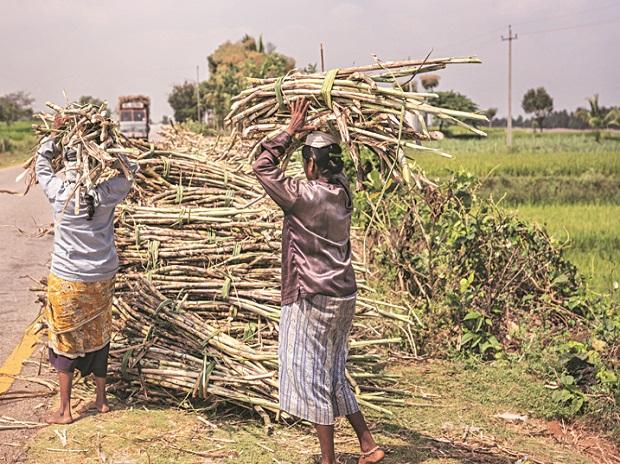[ad_1]
Shares of sugar companies were on a roll as they rallied up to 20 per cent for a second straight trading day on Monday on the back of heavy volumes.
According to a PTI report, the government may consider increasing sugar export quota for the current 2022-23 marketing year after assessing the domestic production in January.
Dalmia Bharat Sugar and Industries (Rs 440.55), Rajshree Sugar & Chemicals (Rs 66.70), Sakthi Sugars (Rs 34.55), Dhampure Speciality Sugars (Rs 34.80) and Simbhaoli Sugars (Rs 33.80) zoomed 20 per cent on the BSE in today’s intra-day trade.
Dhampur Sugar Mills, KCP Sugar & Industries, Ugar Sugar, Avadh Sugar, Mawana Sugars, KM Sugar Mills and Vishwaraj Sugar Industries, meanwhile, rallied between 10 per cent and 19 per cent. In comparison, the S&P BSE Sensex was up 0.23 per cent at 61,476 level.
Sugar, being an agro-based industry, is prone to vagaries of monsoons. Also, as sugar is an essential commodity, it faces high levels of government intervention. Furthermore, the sugar business is inherently a working capital-intensive business given the seasonality in the industry.
Thus, the government has taken a slew of measures in the past couple of years that have changed the dynamics of the sugar industry. The introduction of minimum selling price of sugar in 2018 addressed the key issue of fixed raw material price and market-linked finished product price, making spreads less volatile to sugar cycles, said India Ratings and Research (Ind-Ra).
“Furthermore, the export subsidy helped the industry achieve exports of 7.1MT in sugar season (SS) 2021 (SS20: 5.9MT) despite unremunerative international prices, and supported domestic balance. While the subsidy was not extended post SS21, the robust international prices are likely to have resulted in record exports of around 11.2MT in SS22, which, in conjunction with cane diversion, would be sufficient to reduce the country’s inventory levels meaningfully. While the export quota has been reduced to 6MT in SS23, increasing cane diversion would keep inventory under check and support sugar prices,” it added.
While India’s sugar production has been increasing structurally over the past few years, due to an improvement in sugarcane yields, demand growth remained modest at 1 per cent-2 per cent annually, exceeding the consumption and resulting in high inventory levels.
“In order to help sugar companies manage their inventory levels, the government is focusing on an ethanol blending programme and has advanced the timeline for 20 per cent ethanol blending in petrol to 2025 from 2030. Given the current blending rate of about 9 per cent, the target presents a huge demand potential; and given the supply deficit position, the government has been incentivising the segment,” the rating agency said.
In a separate development, the Goods and Services Tax (GST) Council, on Saturday, decided to raise tax on ethyl alcohol supplied to refineries for blending with motor spirit (petrol), from 5 per cent to 18 per cent.
[ad_2]
Source link



